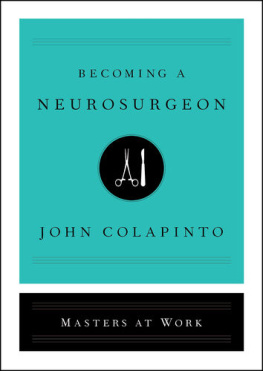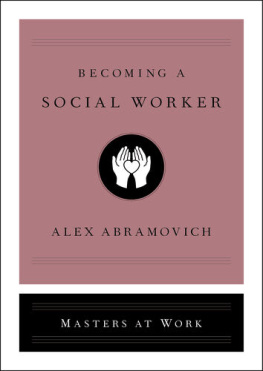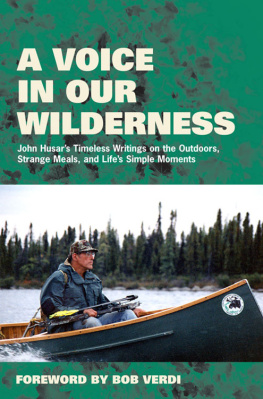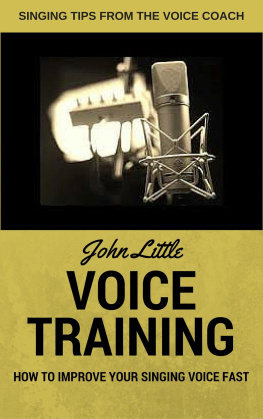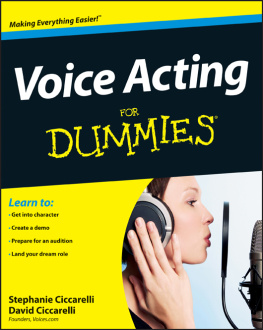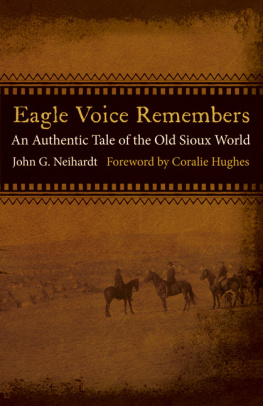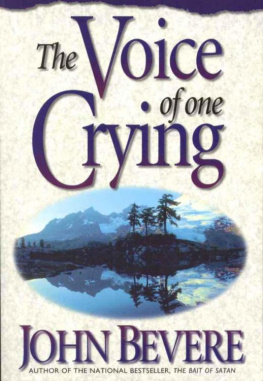John Colapinto - This Is the Voice
Here you can read online John Colapinto - This Is the Voice full text of the book (entire story) in english for free. Download pdf and epub, get meaning, cover and reviews about this ebook. year: 2021, publisher: Simon & Schuster, genre: Home and family. Description of the work, (preface) as well as reviews are available. Best literature library LitArk.com created for fans of good reading and offers a wide selection of genres:
Romance novel
Science fiction
Adventure
Detective
Science
History
Home and family
Prose
Art
Politics
Computer
Non-fiction
Religion
Business
Children
Humor
Choose a favorite category and find really read worthwhile books. Enjoy immersion in the world of imagination, feel the emotions of the characters or learn something new for yourself, make an fascinating discovery.
- Book:This Is the Voice
- Author:
- Publisher:Simon & Schuster
- Genre:
- Year:2021
- Rating:4 / 5
- Favourites:Add to favourites
- Your mark:
- 80
- 1
- 2
- 3
- 4
- 5
This Is the Voice: summary, description and annotation
We offer to read an annotation, description, summary or preface (depends on what the author of the book "This Is the Voice" wrote himself). If you haven't found the necessary information about the book — write in the comments, we will try to find it.
This Is the Voice — read online for free the complete book (whole text) full work
Below is the text of the book, divided by pages. System saving the place of the last page read, allows you to conveniently read the book "This Is the Voice" online for free, without having to search again every time where you left off. Put a bookmark, and you can go to the page where you finished reading at any time.
Font size:
Interval:
Bookmark:


To Donna and Johnny

Some years ago, I was invited by my then-boss, Jann Wenner, the owner of Rolling Stone, to be the lead singer in a band he was putting together from the magazines staff. I had just turned forty-one and I jumped at the opportunity to sustain the delusion that I was not getting old. Sign me up! I said. My chief attributes as a singer included impressive volume and an ability to stay more or less in tune, but I was strictly a self-taught amateur. I had, for instance, never done a proper voice warm-up and had certainly never been informed that the delicate layers of vibratory tissue, muscle, and mucus membrane that make up the vocal cords are as prone to injury as a middle-aged knee joint. So, on practice days, I simply rose from my desk (I was finishing a book on deadline and spent eight hours a day writing, in complete silence), rode the subway to our rehearsal space in downtown Manhattan, took my place behind the microphone, jolted my vocal cords from zero to sixty and started wailing over my bandmates cranked-up guitars and drums.
The folly of this approach became clear to me a few weeks into rehearsals when J. Geils Band front man Peter Wolf, whom Jann had enlisted to perform a song, pulled me aside. You dont have to sing full out in rehearsal, man, he said. Save something for the show. I followed his advice, but by then my voice had taken on a pronounced rasp. I wasnt concerned. I had suffered hoarseness in the past and it had cleared up. Plus, a little vocal raggedness is never out of place in rock n roll. Also, and perhaps most importantly, I felt no discomfortso how could I have hurt my throat? I now know that an invidious feature of voice injuries is that, when they happen, you feel nothing. The vocal cords have no pain receptors.
I continued attending twice-weekly rehearsals and soon reverted to my old waysactually singing harder, trying to put some of the old volume back into my voice, which was sounding weirdly dampened. I was also finding it difficult suddenly to hit high notes, like the F above middle C in the Stones song Miss You (Ohhhhhh, whyd you have to wait so long?). Reaching for it, my voice would break up into a toneless rattle, or vanish altogether. This began to concern me as the days ticked down to our giga holiday party at a downtown dance club to which Jann had invited two thousand of his closest friends, including a constellation of celebrities (Yoko Ono, Paul Shaffer, Val Kilmer), and hired Chers soundman to work the mixing board. Singing is as psychological as it is physical. Stress attacks the vocal apparatus, tightening muscles that should remain loose and pliable, restricting breathing, closing off the throat, paralyzing the tongue and lips. I was experiencing all of these symptoms as I took my place, center stage, in the glare of the lights, and began our opening number, the Beatles song Ill Cry Instead, originally sung by John Lennon. It would seem a little on the nose to suggest that Yoko and her and Johns son, Sean, were looking up at me from the front row, except they were.
Today, I can barely bring myself to listen to the CD of that concert which Jann later presented to each band member as a memento. I wince at the tentative way I sing that Ohhhhh in Miss You, sneaking up on the note from below, sliding into it gingerly. I get there, sort of. But at what cost? By the end of the night, I was growling the lyrics to White Room like it was a Tom Waits number.
A three-day bout of laryngitis followed. Then I began speaking in a parched whisper. This eventually improved to a torn-sounding rumble. Three months after the gig, I was still speaking as if my words were being stirred through gravel. But I was determined to believe the problem would clear upuntil an alarming encounter in the building into which I had just moved with my wife and infant son. Holding open the elevator door for one of my new neighbors, a smiling blond woman, I pointed at the buttons and asked, What floor? Her smile vanished.
Youve got a serious voice injury, she said.
I demurred, but she cut me off, saying that she was a voice coach who worked with Broadway singers and actors. Only much later did I learn that Andrea wasnt just any voice coach. She was first deputy to Kristin Linklater, founder of a worldwide network of experts who teach a method of vocal production first described in Linklaters 1976 book, Freeing the Natural Voice. Along with Stanislavskys Method, Linklaters system is renowned for having helped liberate actors from the stagey, stilted vocal mannerisms of old-school theatrical acting. And Andrea was having none of my disavowals of serious injury. She said that she could see, in my neck, the compensatory muscle movements I was making as I spoke. I was, she told me, straining the tendons, pressing them in against my voice box (or, in the jargon of voice science, larynx), in a bid to compress my vocal cords and help them create sound. I bet your neck gets pretty sore, she said.
In fact, for weeks Id been enduring a peculiar sensation in my neck, as if I had scalded the skin.
Youre no doubt straining other muscles, too, she went on. We use our whole body to sing, and also to talk. Abdominals. Hip flexors. Shoulders. Back. With an injury like yours, youre working harder with all of them. You must be pretty tired by the end of the day. I had been attributing the strange, bone-deep exhaustion that afflicted me every evening to the stresses of new parenthood and finishing my book. Not the muscular effort of speaking.
She invited me to drop by her apartment, anytime. She could show me some simple relaxation exercises that would help with the immediate symptoms. I hate presuming on neighbors and knew that I would never avail myself of this kind offer. Andrea shrugged and said: At the very least, you ought to see a laryngologist, just in case its something else.
This caught my attention. I grew up in a medical family and was familiar with the euphemism something else. She meant a growth. A malignancy. This had never occurred to me. My rasp was so clearly the result of singing with Janns bandor was it?
The next day, I arrived at Mount Sinai Hospital. I had an appointment with Dr. Peak Woo, chief of laryngology, a subspecialty of otolaryngology (or ear, nose, and throat medicine) that focuses on the vocal cords. Dr. Woo was a soft-spoken man in his late forties with a kindly bedside mannerthe kind of doctor who can grasp the tip of your tongue and pull it slightly from your mouth without it seeming unnatural. With his other hand, he guided down my throat a laryngoscope, a tool that looked like the curved spray attachment on a garden hose, a small light affixed to the end. On a nearby computer screen, the live image of my throat was broadcast, a wet red tunnel at the bottom of which sat my vocal cords: two symmetrical, fleshy, pearly-pink membranes stretched like a pair of lips across the opening of my trachea (or windpipe). Through my open vocal cords I could see the rings of tracheal cartilage descending toward the dark abyss of my lungs. Dr. Woo told me to say Ahhh. I did so, the membranes swinging together like a pair of drapes across the opening of my windpipe. They furiously vibrated as I produced the sound. They popped open the instant I fell silent. He removed the scope.
Font size:
Interval:
Bookmark:
Similar books «This Is the Voice»
Look at similar books to This Is the Voice. We have selected literature similar in name and meaning in the hope of providing readers with more options to find new, interesting, not yet read works.
Discussion, reviews of the book This Is the Voice and just readers' own opinions. Leave your comments, write what you think about the work, its meaning or the main characters. Specify what exactly you liked and what you didn't like, and why you think so.

